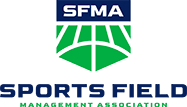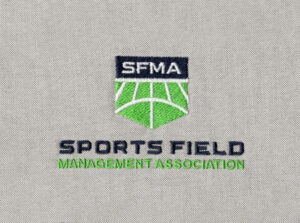Construction of Natural Grass Fields
The demise of many natural grass fields is in the initial construction or renovation work being done. Short-cuts due to budget constraints are temporary and will cost more in the long run. Well-constructed sports fields with proper maintenance will provide the type of playing surface so many parents, coaches and players desire.
Construction and renovation should begin with the selection of a knowledgeable contractor – someone with experience in sports field design and construction who carries a good portfolio with references and may be a certified field builder (CFB).
A good first step for field construction and renovation is ensuring the field has the correct crown and slope. This is where dollars should be spent in any project because if surface drainage is lacking, all else is lost. Crowns and slopes are equally important whether your field is constructed with native soils or modified soils or will have a sand-cap or sand-base. Drainage (surface and internal) is critical to a successful natural grass field.
Selection of the best growing medium for the turfgrass rootzone is also crucial for field health. The soil can be made up of native soil (modified or not) or a sand-based rootzone. The soil texture determines the degree of drainage (surface and internal), water holding capacity, and nutrient holding capacity.
Irrigation may or may not be a luxury and should be strongly considered for the durability and safety of natural grass fields. There are many different types of irrigation to consider, some being more efficient than others. Irrigation types and design should be based on the water source and pressure, number of fields or area, region of the country and type of turfgrass being grown. Regardless of the irrigation type, conduct regular irrigation audits to ensure distribution uniformity and be efficient with water usage. Mismanagement of irrigation will lead
to other issues such as hot spots or diseases.
Turfgrass species selection is also an important component when constructing or renovating natural grass fields. Consider turfgrass varieties that offer good disease resistance and wear tolerance. The National Turfgrass Evaluation Program provides performance information on various turfgrass species and cultivars. If irrigation is not an option, select drought tolerant species of turfgrasses. The Turfgrass Water Conservation Alliance tests turfgrass species for drought tolerance and posts individual varieties that pass the test. Consideration of
turfgrass species and varieties should always be made for good water conservation practices.
When constructing or renovating natural grass sports fields, it is important to follow the guidelines for field design and build. The end result will be a sports field that will perform as expected with proper maintenance. Parents, players and coaches can enjoy a playing surface that is natural and safe. Additional information on the construction and renovation of sports fields can be found in Sports Fields: A Manual for Design, Construction and Maintenance by Jim Pulhalla, Jeff Krans, and Mike Goatley or through your local sports field contractor or
state extension office.
Construction Costs for Various Types of Sports Field Surfaces
For a more complete understanding of what is involved with construction cost of a natural or synthetic field, please view the SFMA Guide to Synthetic and Natural Turfgrass for Sports Fields.
- Natural with On-site Native Soil (no added top soil or sod) – $0.60-$1.50 per sq. ft.
- Natural Turfgrass with Native Soils – $1.50-$3.00 per ft.
- Natural with Sand Cap – $2.75-$4.00 per ft.
- Natural with Sand and Drainage – $5.50-$8.00 per ft.
- Synthetic Infill Systems (carpet, infill, and base) – $6.00-$10.25 per ft.


